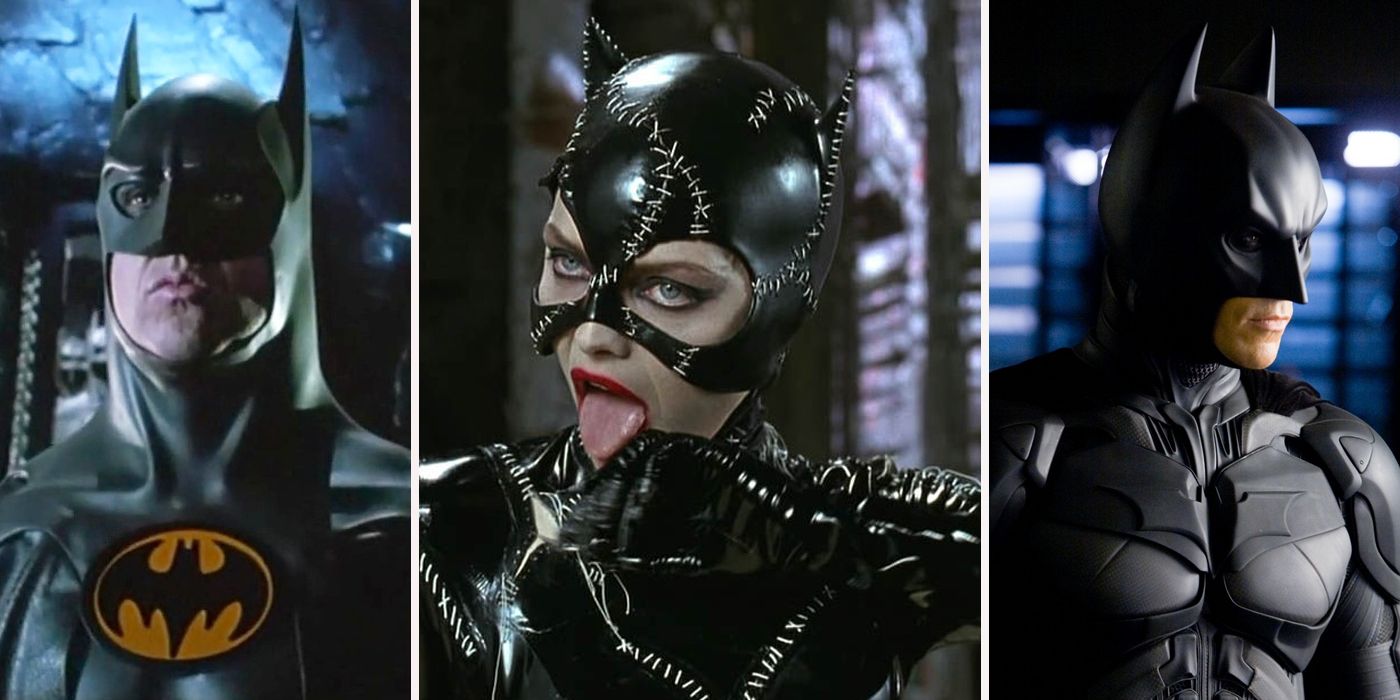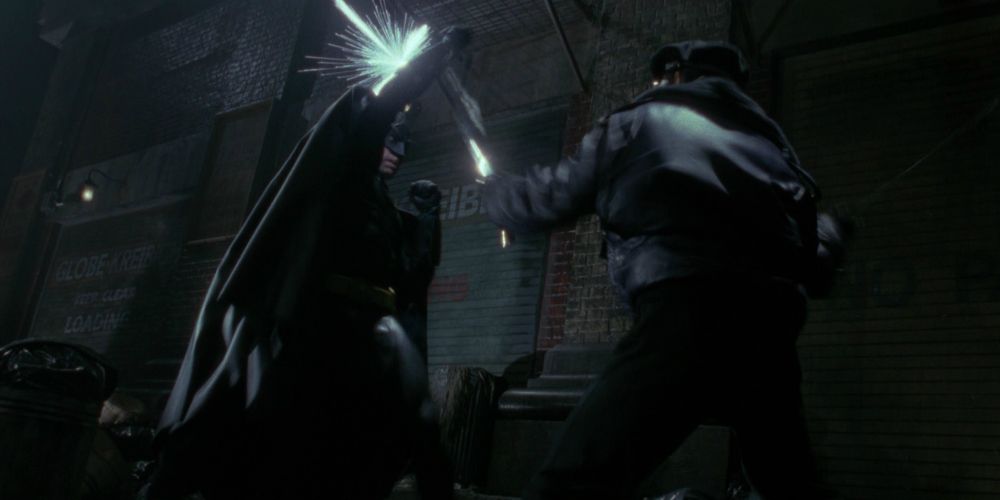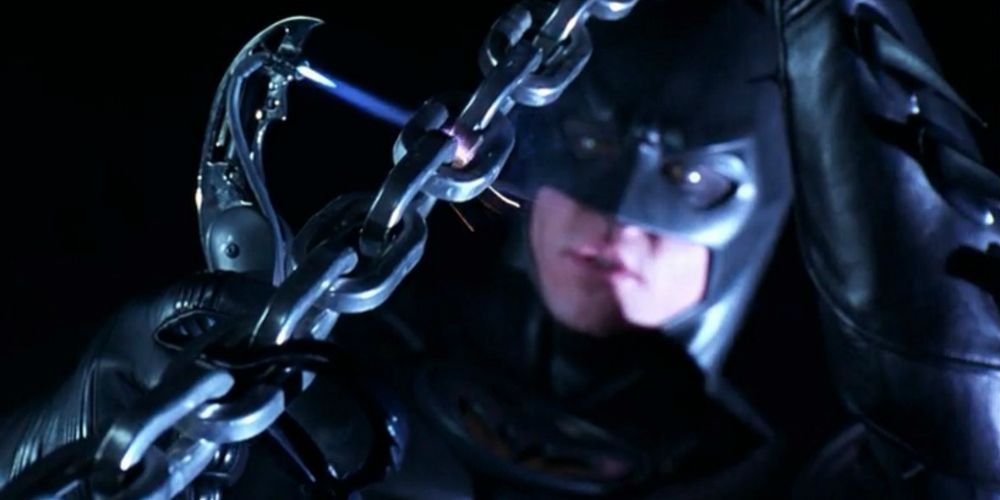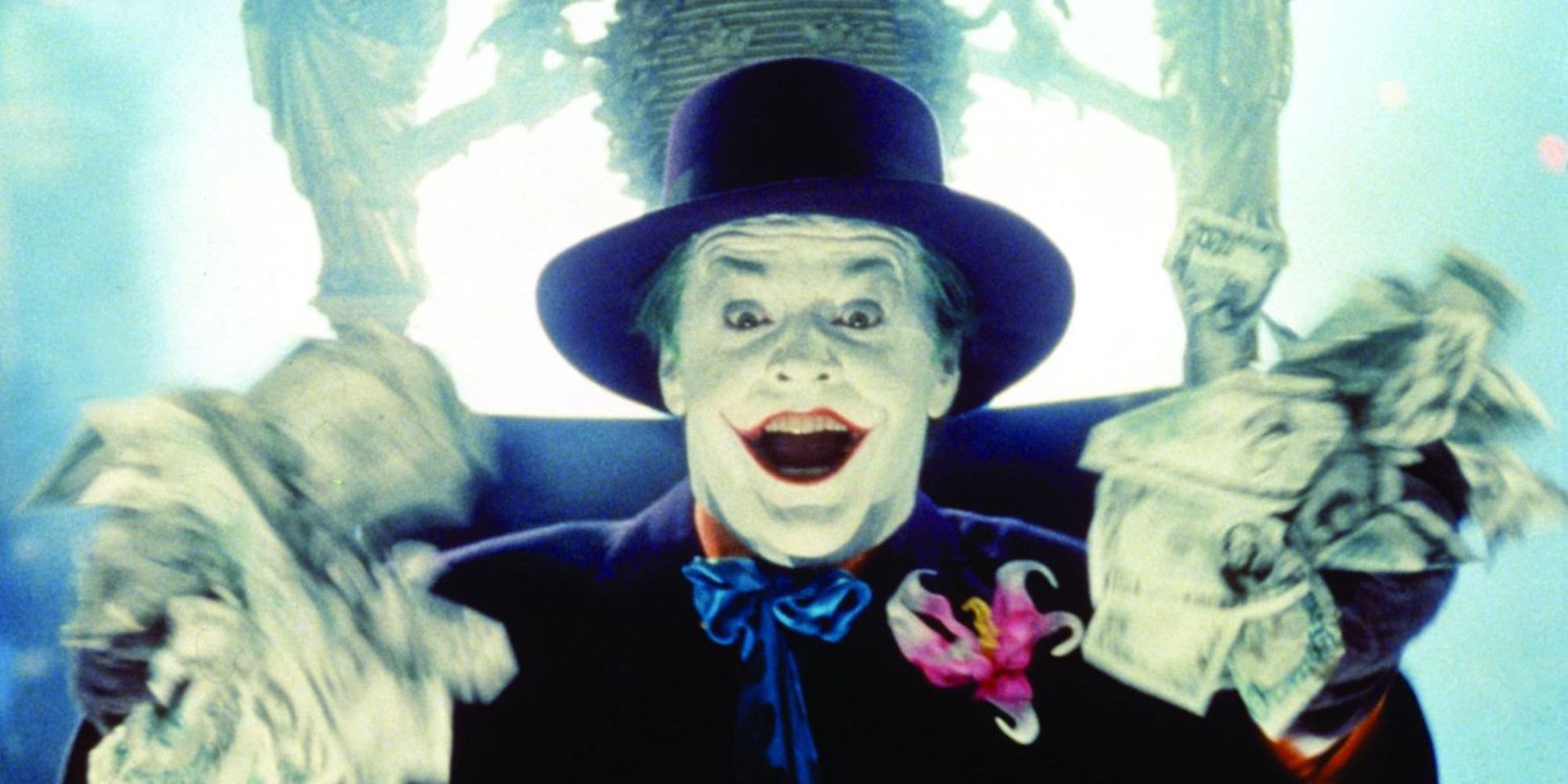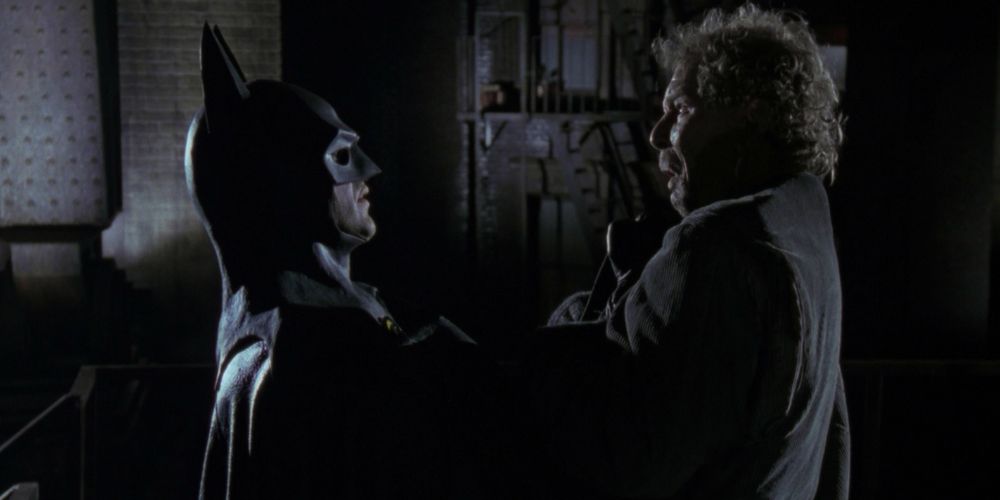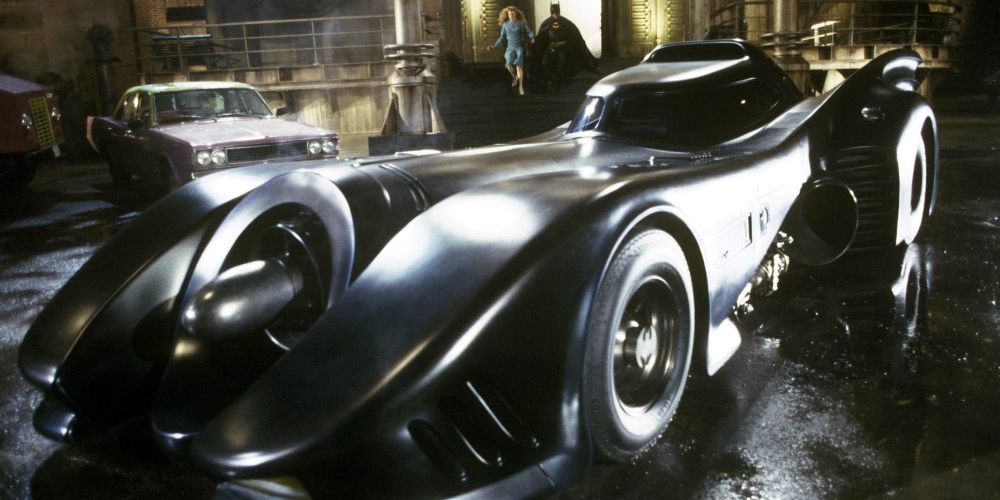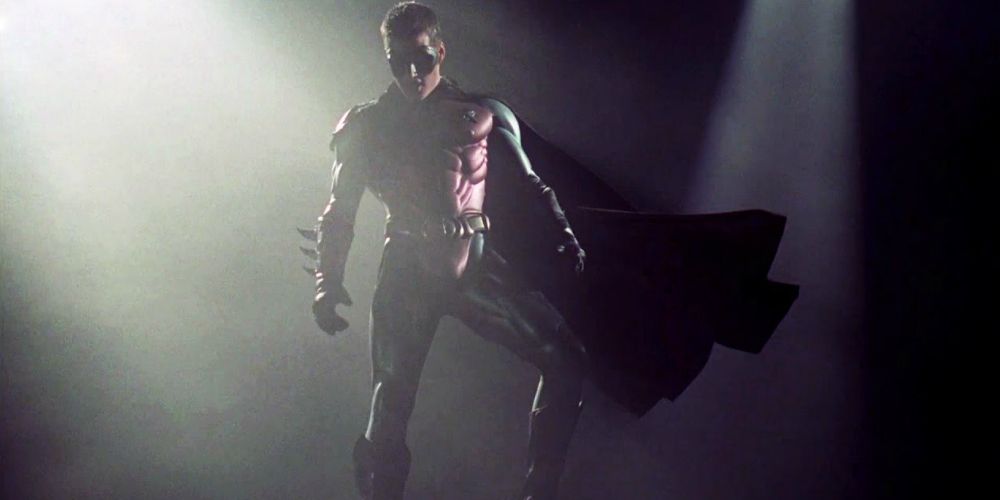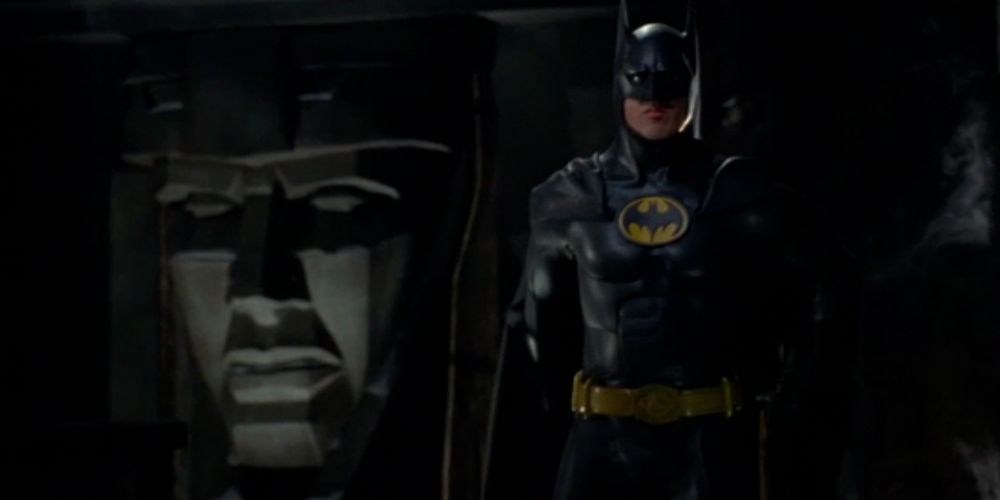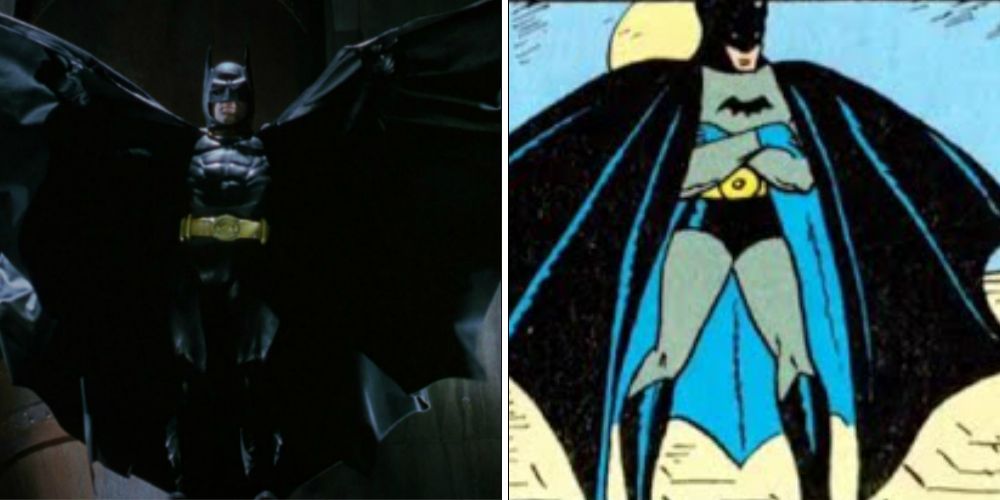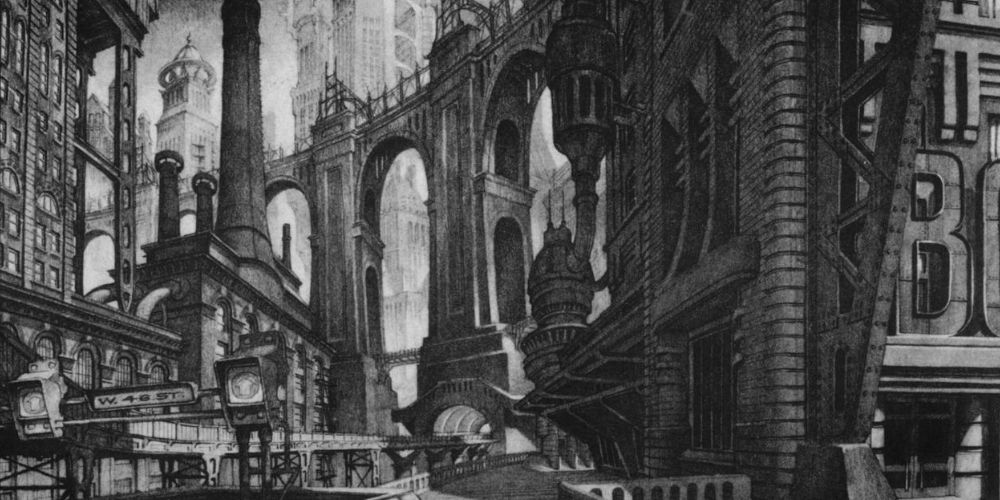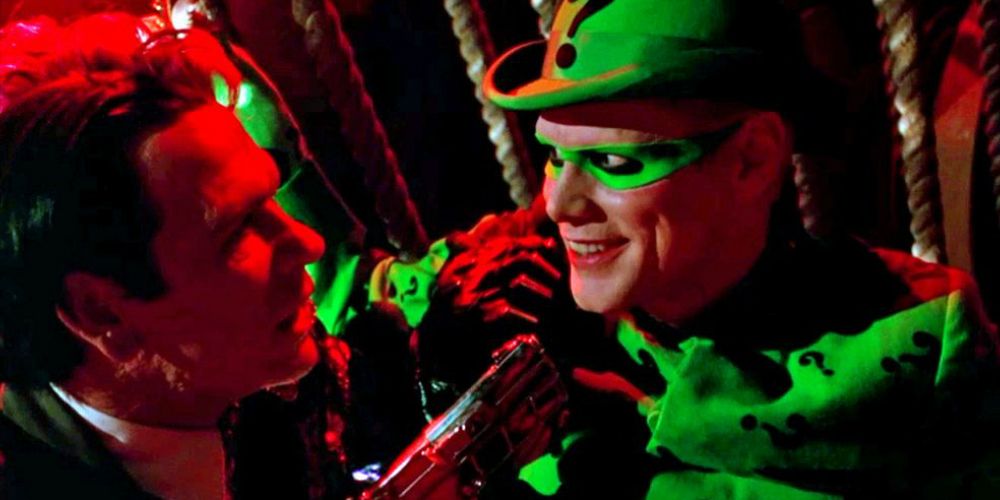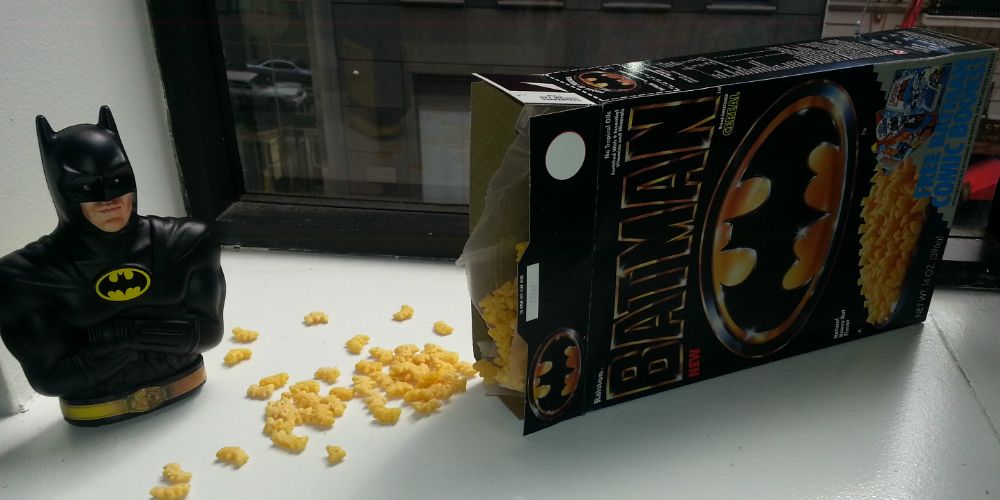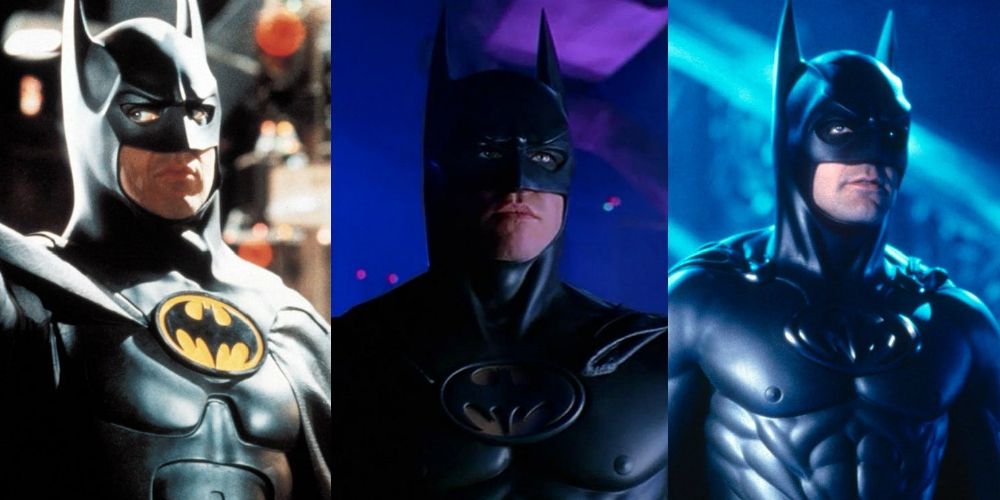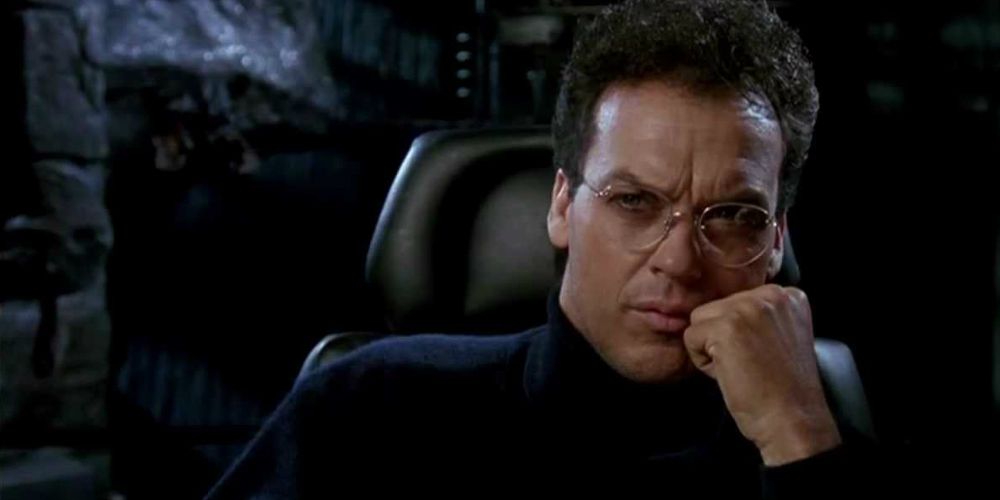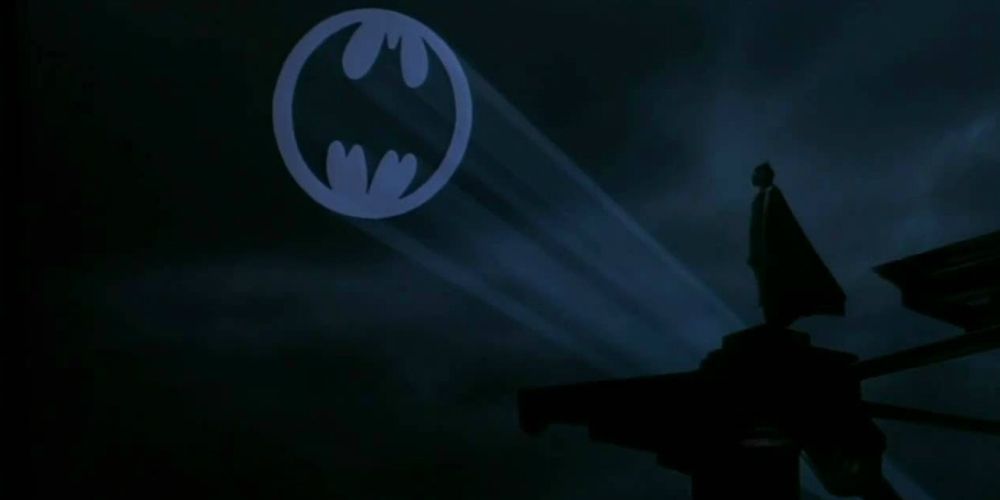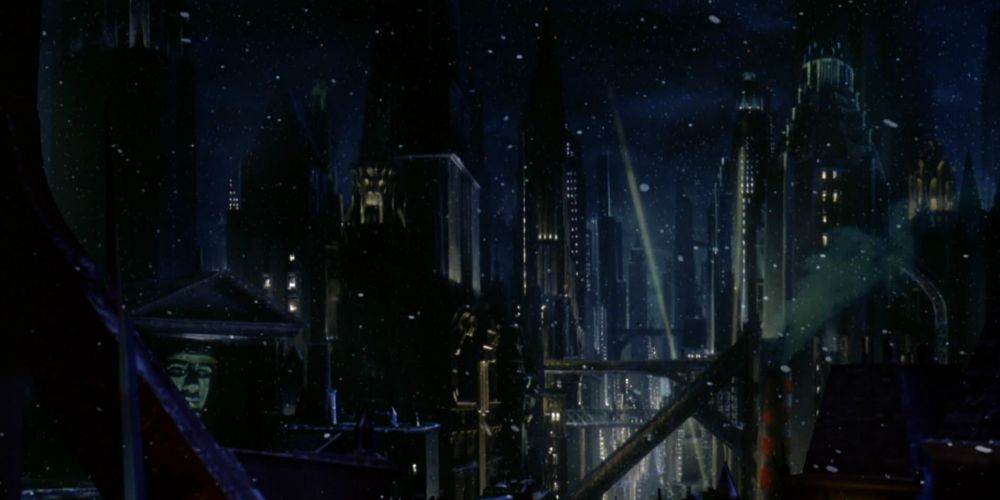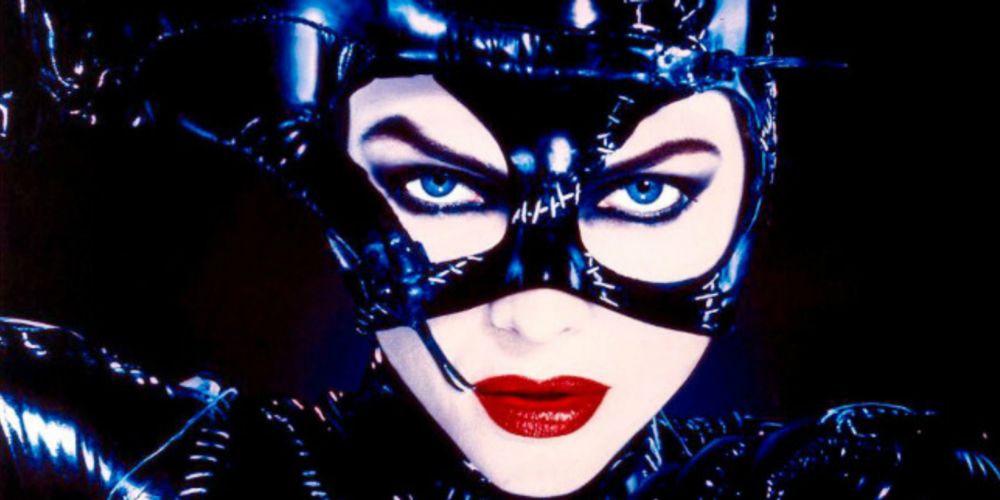Before you start sharpening your knives, let us explain what this post is not. This is not an attempt to besmirch the name of Christopher Nolan's Dark Knight Trilogy. To do so would be preposterous. They are extremely well shot, well directed, well acted and (mostly) well written movies and widely considered to be the Godfather trilogy of superhero cinema. That said, they work best as a self determination parable, a crime drama and a disaster movie (in that order) than examples of superhero cinema, in some cases thumbing their nose at the conventions of the genre.
RELATED: 16 Uncovered Pieces Of Concept Art From Tim Burton’s Batman Movies
Clever, engaging and enjoyable as Nolan's films are, there are certain elements of the Batman's comic book mythology which were better explored or serviced by what came before...and after for that matter, but it's not like the internet needs another Batman V Superman post. If Nolan's trilogy strikes you as the apex of Batman's cinematic exploits you may take umbrage but a strong argument can be made that between them Tim Burton and Joel Schumacher did some things better than Nolan's vaunted films. Even if one concedes that the Nolan films are objectively better films overall, that's no reason to denigrate the things that the combination of Burton and Schumacher got resoundingly right...
16 FIGHT SCENES
Is there a single memorable fight scene in Nolan's trilogy? Many will leap to the defense of the Batman/Bane fights in The Dark Knight Rises, but they were memorable for their dramatic content rather than the quality of the fight choreography. Nolan purposely shot his fight scenes to be cut fast and full of frantic flurries of motion in which we might just catch the flash of a fist here or a leg snaking out for a kick there.
While it suits the tone of the films it doesn't make for terribly exciting action. There's nothing that compares to Batman going mano-a-mano with a sword wielding Joker thug in Burton's original or even the high-kicking gymnastic grace of the fight scenes in the Schumacher films.
15 GADGETS
It's not that the gadgets in the Burton/Schumacher Batman films are better than those in the Dark Knight trilogy, or even better functioning but from an aesthetic point of view they trump those in Nolan's trilogy. Because they're beholden to a superficial realism, the Bat-gadgets in Nolan's trilogy have to look like they work and unfortunately something's lost in translation and the gadgets look inherently less Batman-like.
Thus, the iconic batarangs are re-invented as bat-shaped shurikens and the flamboyantly designed bat-bombs are envisaged as nondescript spiky black balls. The gadgets in the Nolan films certainly don't look bad, but they lack the art deco inspired elegance of Burton's gadgets and the Bond-on-acid kookiness of the Schumacher gadgets. Plus, Christian Bale's Batman never had a bat blowtorch or a remote controlled batarang did he?
14 COMIC BOOK ACCURATE VILLAINS
For better or for worse, Nolan adapted the iconic villains of Batman's comic book universe to suit his own ends, cherry picking design and character elements to suit the stories he was trying to tell. While the films generally do this very successfully, one could argue that both visually and narratively the villains of the Burton/Schumacher films are more comic book accurate.
Jack Nicholson's Joker, for example, not only had a comic book accurate origin drawing heavily on The Killing Joke but his maniacal mobster persona was closer to what was going on in the comics at the time than Heath Ledger's nihilistic terrorist. Tommy Lee Jones' Two-Face, while vastly inferior to Aaron Eckhart's, also has a much more comic book accurate origin and as for Bane...okay, so maybe comic book accuracy isn't priority number one for these characters.
13 THE BAT VOICE
Christian Bale has famously said that his entry point for the Batman persona was to play him "like a beast", hence the gravelly growl that became the hallmark of his performance. As cogent an acting choice as this was, it would often be the butt of countless smirking internet jibes. The dialogue choices didn't help much either. There are certain phrases like "You'd never give it to an ordinary citizen" that just sound unintelligible through this gruff gargling.
On the other hand Michael Keaton, and Val Kilmer after him, dropped his voice a couple of octaves and added a slight rasp that not only disguised his voice but made it sound both menacing and super cool. Keaton laid the foundation for what audiences expected from Batman's voice; a ball which Kevin Conroy would later pick up and run away with in his numerous animated and video game incarnations.
12 BATMOBILES
Anton Furst's Batmobile is quite possibly the best vehicle in cinema history. It somehow manages to be sleek and elegant yet also brutal and intimidating with more on board gadgets than all but the most fanciful of Bond cars. It's the most iconic batmobile in cinema or any medium for that matter. Even the Batman Forever Batmobile has an interesting aesthetic, eschewing '90s notions of high tech for a vaguely Geiger inspired (he came up with some designs for the film which ultimately weren't used) almost biomechanical appearance.
Heck, even the Batman and Robin Batmobile is cool when you strip away the neon. The much maligned vehicle took the sleek lines of classic racing cars like the Jaguar D Type and exaggerated them. By contrast the Tumbler, as impressive as its real life capabilities were, is a boxy, bulky ugly monstrosity.
11 ROBIN (NO, REALLY!)
Okay, yes Chris O'Donnell's Dick Grayson is clearly 25 yet acts like a moody 13-year old, but there's a lot to like about Schumacher's depiction of Robin. His origin is comic book accurate, his motivations for donning the suit in Batman Forever are reasonable and his character arc where he learns the distinction between vengeance and justice is perfectly valid.
The costume does a great job of taking the gaudy circus costume he wears earlier in the movie (and ties in more closely with his comic book counterpart) and translating it into more metallic muted tones with some nice nods to Tim Drake's costume from the same era. Sure there are some questionable dialogue and performance choices here and there but this depiction of Robin does a lot right. John Blake is... fine, but he's Robin in (legal) name only.
10 EXPRESSIONISM
As stunning as Wally Pfister's cinematography is, there's something very un-Batman about setting the story of such a flamboyant character in a world that is so superficially real. In the world of Tim Burton's Batman, for instance the character makes a visual sense in the expressionistic and grotesque pastiche of a city and a world that have become corrupt and rotten to the core -- just look at the street thugs in the film's opening scene.
A character as extreme and theatrical as the Batman seems like a natural reaction to that kind of world, while in the Nolan films the hyper realistic aesthetic serves only to highlight the inherent ridiculousness of the character. Moreover, the expressionism of these films (yes, even Schumacher's neon saturated frisson) plays to the heightened reality that a comic book world presents us with.
9 BRINGING THE COMICS TO LIFE
Treating a character like Batman as a serious character is a fool's errand because you're dealing with a 35 year-old man who dresses like a bat and, in the words of Tim Burton himself, "that's pretty weird". The Burton/Schumacher films embrace the larger than life nature of the comic book characters and their world to life whereas the Nolan films do all that they can to rail against it.
What's curious is how each of the film encapsulates the feel of a particular era of the comics. Batman is a pastiche of the hardboiled comics of the '80s, Batman Returns took its cues from the 1939 era comics presenting us with a more violent, almost vampiric Batman. Batman Forever has its roots in the lighter comics of the '40s while Batman & Robin is pure '60s, baby!
8 PRODUCTION DESIGN
The late Anton Furts's production design for the original Batman set an Oscar-winningly high bar that will never be bettered so perhaps it's for the best that Nolan's films didn't even try, opting instead to go in a completely different direction. The Burton and Schumacher films are triumphs of style over substance, for sure, but what style.
Furst's successors Bo Welch and Barbara Ling understood the importance of telling the story through expressionistic and larger than life visuals. Like Blade Runner or even Metropolis the films aren't so much about plot so much as feel and all four films are able to present a Gotham that feels palpable despite the fact that close scrutiny reveals a lot of it to be shot on sound stages.
7 FUN
Is it heresy to say that a Batman film can have a little fun thrown into the mix every now and then. Batman Forever demonstrated that the world of Gotham City can have some fun, goofy or slapstick moments taking place while still presenting Batman as an elusive, shadowy figure. The Schumacher films (and the Burton films to a lesser extent) didn't take themselves too seriously therefore the odd "It's the car, right? Chicks love the car" or "This is why Superman works alone" kind of work.
The Nolan films can be a little too humorless and obsessively serious, so the odd attempts at levity (such as Jim Gordon's "I have got to get me one of those") stick out like a sore thumb amidst the backdrop of self conscious realism and fall flat.
6 BATMANIA
If you weren't alive in the summer of '89 it's hard to explain the ubiquity of the Batmania that engulfed the world that year. Seriously, even the enthused retrospectives on the special features of the film's numerous home releases don't come close to describing it. The hype that accompanied the launch of the TV show in 1966 came close and lead up to The Dark Knight kind of reached a similar fever pitch of anticipation (owing largely to that excellent viral marketing campaign) but the rampant expectancy that preceded the release of Burton's first film.
The bat-logo adorned everything from baseball caps to breakfast cereals and absolutely everybody was wearing a black T-shirt emblazoned with the familiar black and yellow logo. Perhaps it's fond reminiscences of this heyday of Bat-fandom that has helped the film retain a vociferous fan base after all these years as much as the film itself.
5 REVOLUTIONIZING THE BATSUIT
When the average height, average weight Michael Keaton was cast as Batman rather than someone more... Ben Afflecky, many fans were outraged for numerous reasons. One common complaint would be that the relatively slight Keaton would look ridiculous in the gray and blue tights once sported by Adam West which was, for a generation, the visual reference point for a live action Batsuit.
Tim Burton knew better, reasoning that a 250 lb juggernaut wouldn't need to dress like a bat to scare criminals while a more unassuming man would need to dress as a bat for effect. The result was a pitch black suit armored with sculpted musculature and a cape with a far more impressive wingspan than we had ever seen in live action before. Thus, the template for what a batsuit should be was established and the formula would remain relatively unchanged until 2008.
4 SHOWING INSTEAD OF TELLING
"People need dramatic examples to shake them out of their apathy, and I can't do that as Bruce Wayne...". Thus begins Bruce's perfectly reasoned, achingly rational proposal for becoming Batman that feels so overcooked it feels like it should have an accompanying Power Point presentation. The trouble with Nolan's films (especially Batman Begins) is the way in which it never fails to tell when it can always show.
Film is a visual medium and too much exposition of this sort can easily become jarring. Compare that to the flashback to the Wayne murder in 1989 followed by Bruce's realization that not only are Jack Napier and The Joker one and the same but that he was responsible for making him who and what he later became. An actor's facial expression combined with a well composed frame is worth a thousand words.
3 MUSIC
Hanz Zimmer is a master composer but most fans will take his Superman theme from Man of Steel over his ultra minimalist approach to The Dark Knight. The scores for the trilogy aren't bad at all, in fact they're very, very good. But... Come on! No composer in history has given Batman a more iconic theme than Danny Elfman. There's a reason why the blaring martial strings, brass and drums are used in the Lego Batman games.
There's only one superhero movie score that's more iconic and that was written by an at-the-top-of-his-game John Williams. While we were all disappointed that Schumacher jettisoned the score for his sequels, even Elliot Goldenthal's replacement score managed to encapsulate the combination of heroism and mystery intrinsic to the Batman character.
2 GOTHAM CITY
Just to be clear, we're not talking about the dreadful R. Kelly song on the Batman & Robin soundtrack. We're talking about the phenomenal and expressionistic production design present in Burton's, and yes even Schumacher's films. Anton Furst's original incarnation of Gotham was a twisted and grotesque parody of a city with subtle hints of Lang's Metropolis here and there. Bo Welch's Gotham dialed up the scale to make everything seem more oppressive to the point of fascism and while Barbara Ling's Gotham was definitely over saturated with neon there was some interesting design behind it.
The giant statues that look like they sprouted out of the ground so they had to build skyscrapers around them may be logistically questionable but still look cool. Nolan's Gotham just looks conspicuously like Chicago then conspicuously like Pittsburgh.
1 CATWOMAN
It's telling that although Michelle Pfeiffer's Catwoman was possibly the least comic book accurate of the villains of this era, very few fans actually care. Michelle Pfeiffer's performance transcends fanboy gripes (Catwoman's motivations and modus operandi have always been fairly fluid in the comics anyway), with a characterization that is undeniably Catwoman despite bearing very little relation to her comic book counterpart.
Every time Michelle Pfeiffer enters the frame, you can't take your eyes off her. Whether she's in her sultry vinyl clad, whip wielding cat-form or hugging the walls as the mousy and repressed Selina Kyle she commands the screen and runs away with the film. Watching Selina's sanity unravel along with her costume is both tragic and compelling. Anne Hathaway's Selina is great, she really is, but she doesn't touch this fascinating and densely layered performance.
What is your favorite thing about the Burton/Schumacher films? Let us know in the comments!

